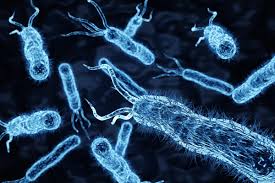
Breaking News
 Is Yen Carry Trade's unwind about to trigger a repo market meltdown? Let's dive into the mec
Is Yen Carry Trade's unwind about to trigger a repo market meltdown? Let's dive into the mec
 Chairman Rand Paul Releases New Report Revealing Hundreds of Billions...
Chairman Rand Paul Releases New Report Revealing Hundreds of Billions...
 Get Schiffty Music Video | Rick and Morty | Adult Swim
Get Schiffty Music Video | Rick and Morty | Adult Swim
Top Tech News
 This tiny dev board is packed with features for ambitious makers
This tiny dev board is packed with features for ambitious makers
 Scientists Discover Gel to Regrow Tooth Enamel
Scientists Discover Gel to Regrow Tooth Enamel
 Vitamin C and Dandelion Root Killing Cancer Cells -- as Former CDC Director Calls for COVID-19...
Vitamin C and Dandelion Root Killing Cancer Cells -- as Former CDC Director Calls for COVID-19...
 Galactic Brain: US firm plans space-based data centers, power grid to challenge China
Galactic Brain: US firm plans space-based data centers, power grid to challenge China
 A microbial cleanup for glyphosate just earned a patent. Here's why that matters
A microbial cleanup for glyphosate just earned a patent. Here's why that matters
 Japan Breaks Internet Speed Record with 5 Million Times Faster Data Transfer
Japan Breaks Internet Speed Record with 5 Million Times Faster Data Transfer
 Advanced Propulsion Resources Part 1 of 2
Advanced Propulsion Resources Part 1 of 2
 PulsarFusion a forward-thinking UK aerospace company, is pushing the boundaries of space travel...
PulsarFusion a forward-thinking UK aerospace company, is pushing the boundaries of space travel...
 Dinky little laser box throws big-screen entertainment from inches away
Dinky little laser box throws big-screen entertainment from inches away
 'World's first' sodium-ion flashlight shines bright even at -40 ºF
'World's first' sodium-ion flashlight shines bright even at -40 ºF
Nearly 100% of bacterial infections can now be identified in under 3 hours

Scientists at the Ulsan National Institute of Science & Technology (UNIST) in South Korea have unveiled their novel diagnostic technique known as fluorescence in situ hybridization (FISH), using artificial polymers – peptide nucleic acid (PNA) – that act as probes to bind to different genetic sequences within bacteria. When the two probe molecules bind to the target, fluorescent signals are emitted, which essentially reveal the fingerprint of different pathogens.
"The fluorescence in situ hybridization (FISH) technique allows the rapid detection and identification of microbes based on their variation in genomic sequence without time-consuming culturing or sequencing," the scientists noted. "However, the recent explosion of microbial genomic data has made it challenging to design an appropriate set of probes for microbial mixtures. We developed a novel set of peptide nucleic acid (PNA)-based FISH probes with optimal target specificity by analyzing the variations in 16S ribosomal RNA sequence across all bacterial species."



